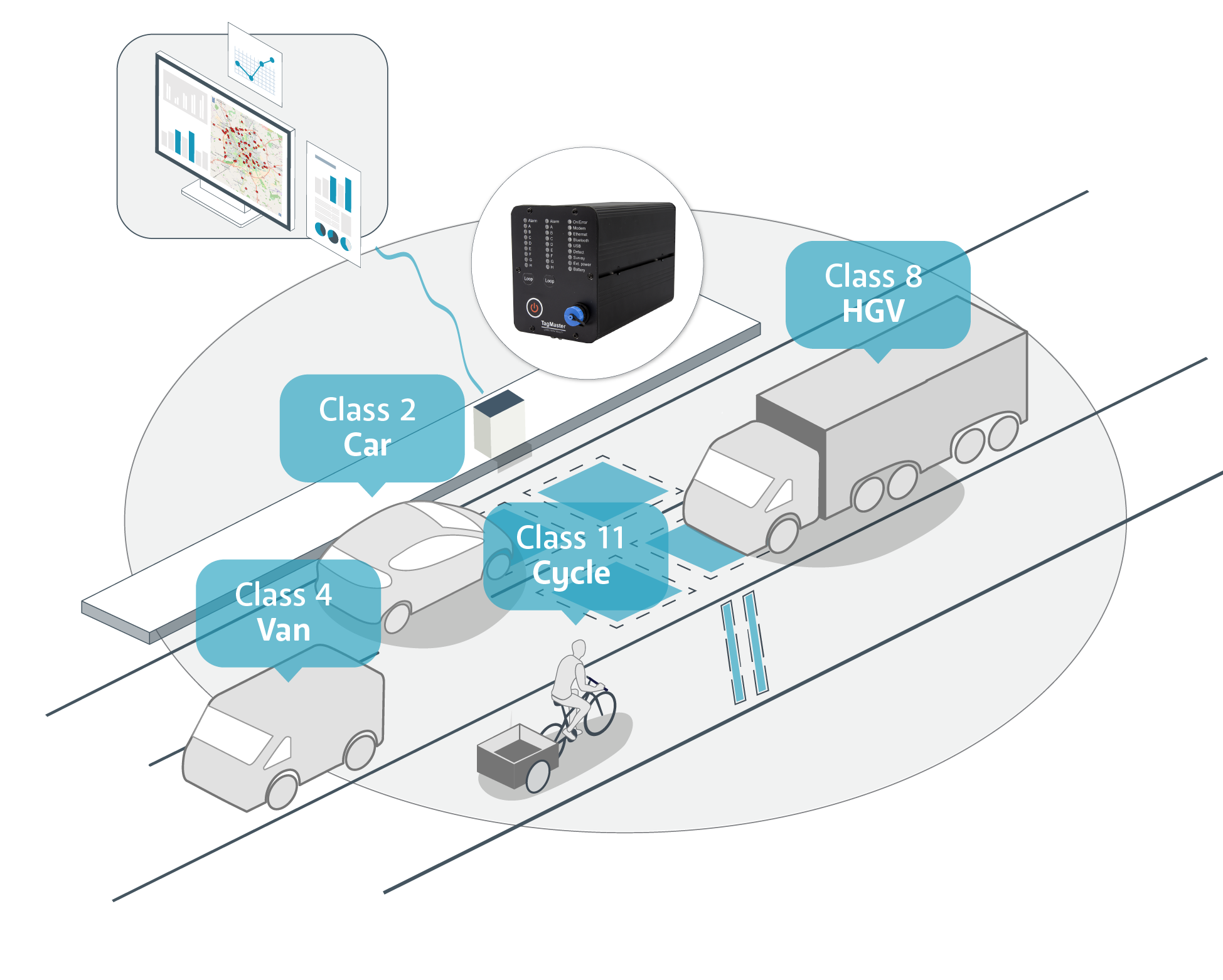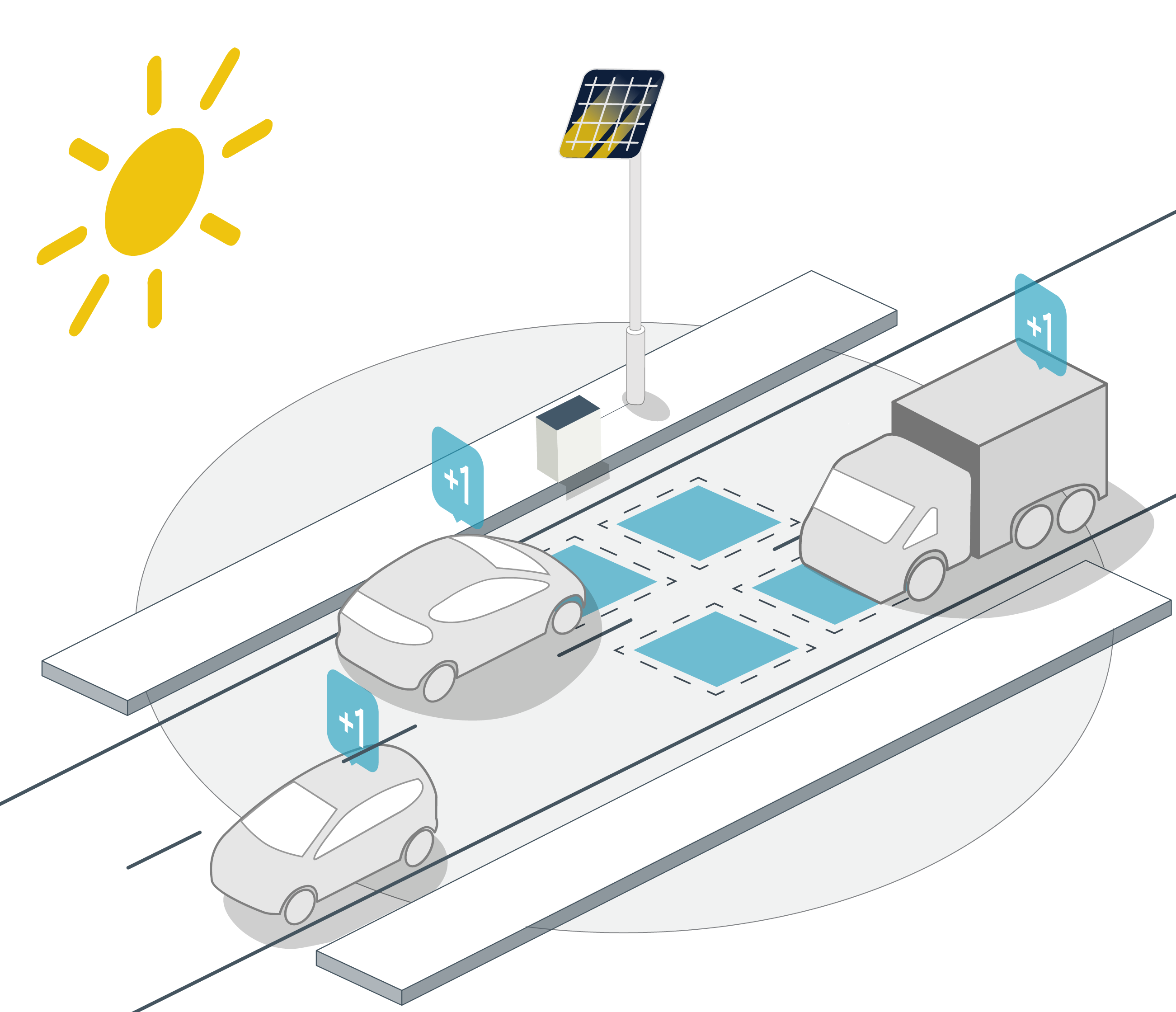The Benefits of Permanent Traffic Monitoring

Permanent Traffic Monitoring
Permanent traffic monitoring, which involves the continuous collection and analysis of traffic data on roadways and transportation systems, offers several significant benefits for transportation authorities, urban planners, and the general public.
Transportation is evolving and traffic monitoring solutions are advancing. Informed decision making is fundamental to building a sustainable road network and ensuring the safety of all road users. Nothing will provide road managers with richer information than reliable, permanent traffic monitoring systems.
By utilising a modern traffic monitoring platform, which can be retrofitted to historic inductive loop sites, you can unlock huge amounts of added value and instantly transform your current network of Automatic Traffic Counters (ATCs) into an active monitoring hub with untapped possibilities.

The solution
The TagMaster Compact PLUS Traffic Counter has been specifically aimed at the traditional count classifier requirements. Unlike other units on the market, the Compact PLUS requires minimum infrastructure and boasts improved weatherproofing (IP66), thus reducing installation and long-term maintenance costs.
The unit has Bluetooth for installation and configuration. It is supported by EasySetup, a modern and intuitive Android app for setup. This provides all the tools needed for site installation and commissioning, site validation and fault diagnostics as well as manual data collection if required.
Choose from a range of power options from solar, battery, mains or PoE to ensure you’re never left with downtime in data capture.
The internal 4G modem allows for seamless data transmission to all TagMaster Traffic Monitoring software products and is UTMC compatible together with Catalyst.
The middleware EasyData offers a Rest API running as a Docker image for easy integration with third party systems.
A wide range of applications are available in a single unit from real time vehicle speed & flow monitoring/alerting to detailed individual vehicle record capture for historic analysis.
The Compact PLUS provides accurate traffic flow data, enabling you to identify problem areas on the network, deploy solutions and comprehend how effective they are.
Multimodal data collection (vehicle and cycle) is possible from a single unit to promote safe and sustainable transport.
Using two inductive loops to provide highly accurate classified data, the TagMaster Compact PLUS Traffic Counter will automatically switch to single loop operation in case of a faulty loop to ensure continuous data collection and prevent data loss.
The Benefits
Improved Safety: Continuous traffic monitoring can help identify and address traffic congestion and hazardous road conditions for all road users in real-time. This information allows authorities to take immediate action, such as deploying emergency services or adjusting traffic signal timings, to enhance safety on the road.
Traffic Flow Optimization: By analysing traffic data over time, transportation authorities can make informed decisions about optimizing traffic flow. This can involve adjusting signal timings, implementing lane changes, or rerouting traffic to alleviate congestion and reduce travel times for commuters.
Reduced Congestion: Permanent traffic monitoring can lead to a reduction in traffic congestion by identifying bottlenecks, chokepoints, and areas with high traffic volume. Authorities can use this data to develop strategies to mitigate congestion, such as building new roads or improving public transportation.
Environmental Benefits: Reduced congestion and optimised traffic flow can result in lower emissions from vehicles stuck in traffic. By minimizing stop-and-go traffic patterns, permanent traffic monitoring contributes to improved air quality and reduced fuel consumption.
Data-Driven Decision-Making: Continuous data collection provides transportation authorities with a wealth of information for decision-making. This data can inform long-term planning, infrastructure development, and policy changes, ensuring that resources are allocated where they are most needed.
Public Awareness: Traffic data can be made available to the public through various means, such as traffic apps, websites, and electronic message boards. This allows commuters to make informed decisions about their travel routes and times, potentially reducing their exposure to traffic delays.
Traffic Research: Traffic data collected over time can be valuable for research purposes. Researchers can use this data to study traffic patterns, behaviour and trends, leading to innovations in transportation systems and technologies.
Revenue Generation: Some regions use traffic monitoring data for toll collection and road pricing systems. This revenue can be reinvested in infrastructure improvements, further enhancing the transportation network.
Accurate Planning: Long-term transportation planning relies on accurate data. Permanent traffic monitoring helps authorities predict future traffic demands and assess the need for additional infrastructure or public transportation services.
Summary
In summary, permanent traffic monitoring offers a wide range of benefits, from enhancing safety and reducing congestion to improving environmental conditions and enabling data-driven decision-making. It plays a crucial role in creating efficient and sustainable transportation systems in both urban and rural areas.
Products:
Next Step:
 Contact
Contact